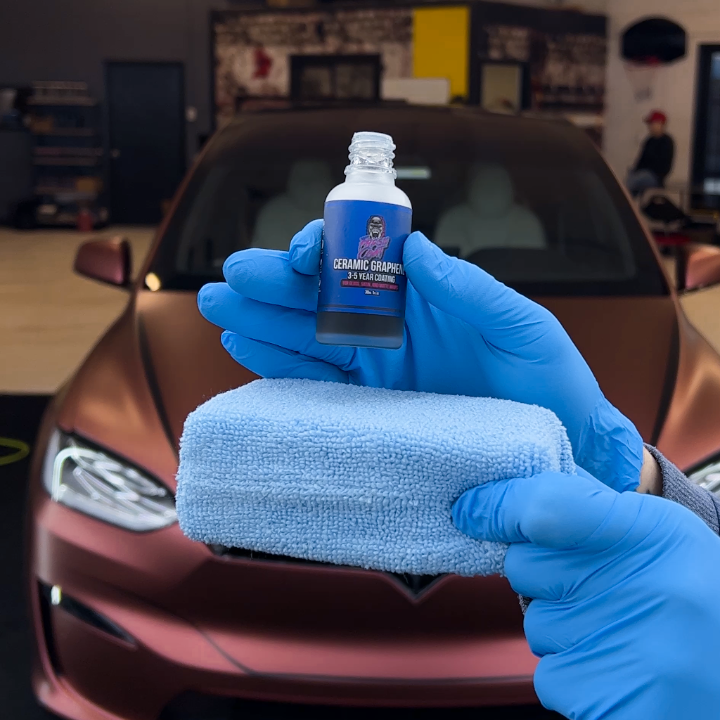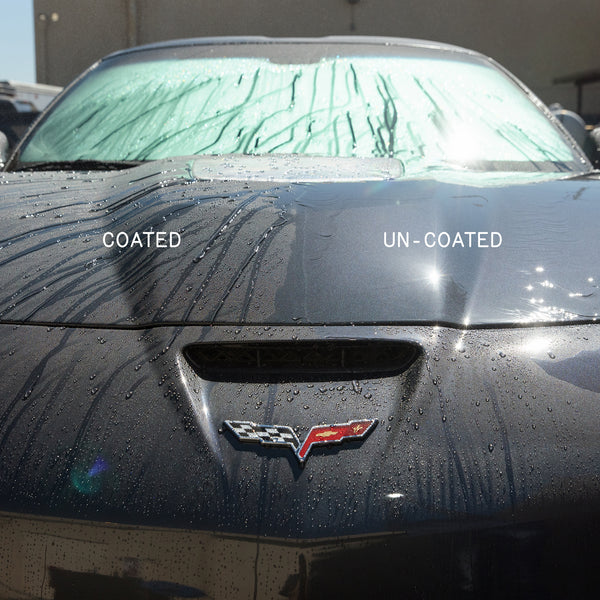Why Choose Ceramic Pro: The Most Effective Financial Investment for Your Automobile's Look
Why Choose Ceramic Pro: The Most Effective Financial Investment for Your Automobile's Look
Blog Article
The Science Behind Ceramic Finishing: How It Enhances Your Vehicle's Aesthetic and Sturdiness

Recognizing Ceramic Layer Chemistry
The chemical make-up of ceramic coatings plays a critical duty in establishing their longevity and protective buildings on lorry surface areas. Ceramic finishes are usually made up of silicon dioxide (SiO2), which is a primary component providing solidity and warm resistance. Other active ingredients such as titanium dioxide, silicon carbide, and polysilazanes are often included in improve specific buildings like UV resistance, adhesion, and hydrophobicity.
Silicon dioxide, also recognized as silica, forms a clear and solid layer on the car surface when used correctly. This layer functions as a shield, securing the paint from ecological pollutants, UV rays, oxidation, and chemical discolorations. Titanium dioxide assists in obstructing hazardous UV rays that can create paint fading and deterioration. Silicon carbide is understood for its abrasion resistance, making the ceramic layer tough and sturdy versus physical damage. Polysilazanes are used to boost the finish's flexibility and bond to the lorry's surface, making sure long-lasting security. Recognizing the chemistry behind ceramic coatings is important for both applicators and lorry owners to appreciate the value and advantages these layers use in maintaining the aesthetic charm and durability of lorries.
Boosted Gloss and Mirror-like End Up
Comprehending the chemical structure of ceramic layers not only reveals their safety homes however additionally sheds light on exactly how they add to attaining an improved gloss and mirror-like finish on automobile surfaces - ceramic pro. Furthermore, the chemical structure of ceramic coverings permits them to form a strong bond with the automobile's paintwork, preventing oxidation and preserving the clearness of the surface over time. The mix of filling up homes, light representation, and lasting security makes ceramic finishes a preferred choice for those looking for a vibrant and mirror-like surface for their automobiles.

Effect On Paint Protection and Long Life
Ceramic finishes for vehicles significantly improve the long life and protection of the paintwork. By creating a chemically resistant layer in addition to the car's clear layer, ceramic finishings act as an obstacle versus different environmental pollutants that can damage the paint gradually. These coatings are created to fend off dust, water, roadway salt, bird droppings, and various other hazardous materials, decreasing the threat of paint oxidation and rust. In addition, the hardness of ceramic layers provides a degree of scrape resistance, helping to preserve the lorry's appearance for a prolonged period.
In terms of durability, ceramic layers provide a sturdy solution compared to standard waxes or sealers. While waxes may last a couple of weeks to a few months, ceramic finishes can last years with appropriate maintenance. This extended life expectancy not only decreases the frequency of reapplications however likewise saves time and effort in the lengthy run. On the whole, the safety residential or commercial properties of ceramic finishings contribute dramatically to maintaining the car's paintwork and boosting its visual allure over a prolonged period.
Resistance to Pollutants and Severe Elements
With the safety guard offered by ceramic finishings against numerous ecological pollutants and components, automobiles are able to keep their immaculate appearance despite direct exposure to harsh conditions. Ceramic finishes develop a strong obstacle that drives away water, dirt, dust, and various other common toxins, preventing them from bonding to the lorry's surface. This hydrophobic nature not just makes cleaning much easier but additionally reduces the threat of water spots and etching brought on by acidic pollutants. In addition, the chemical resistance of ceramic finishes helps secure the paint from bird droppings, insect splatter, tree sap, and other destructive substances that can harm the finish gradually.
In addition, ceramic coverings supply UV security, securing the car's paint from the sun's unsafe rays that can trigger fading and oxidation. This resistance to UV damages helps preserve the shade strength and shine of the paint for longer periods. By developing a durable and durable barrier, ceramic finishings make sure that the lorry's exterior remains safeguarded versus a vast array of contaminants and severe components, protecting its aesthetic appeal and resilience.
Application Techniques and Upkeep Tips
For optimum results when the original source applying ceramic layers to automobiles, using appropriate techniques and adhering to recommended upkeep practices are vital. Before using the ceramic finish, it is useful reference essential to extensively clean and decontaminate the lorry's surface to make sure proper bond.
When using the ceramic finish, it is advised to operate in tiny sections to guarantee also coverage and to stop the product from drying as well promptly. Using applicator pads or microfiber fabrics, use the covering in a crisscross or up-and-down activity, depending upon the item's guidelines. After the finishing is used, permit it to cure for the specified time prior to buffing off any residue.
In terms of upkeep, normal washing with pH-neutral soaps and preventing abrasive tools or extreme chemicals will certainly aid maintain the ceramic covering's stability. Routine inspections for any damages or use on the layer can additionally help preserve its protective homes gradually.

Conclusion
In verdict, ceramic finishing enhances an automobile's aesthetic charm and resilience with its chemical composition, providing a shiny coating and safeguarding the paint from ecological pollutants. Its resistance to extreme aspects and convenience of upkeep make it a preferred choice for auto owners seeking to protect the appearance of their cars. On the whole, ceramic covering is a clinically backed remedy for maintaining the appearance and durability of your lorry.
Recognizing the chemistry behind ceramic coverings is vital for both applicators and lorry proprietors to appreciate the value and benefits these finishes supply in maintaining the aesthetic allure and longevity of cars. (ceramic pro)
Comprehending the chemical structure of ceramic coatings not only reveals their protective homes but likewise loses light on just how they add to attaining a boosted gloss learn the facts here now and mirror-like coating on lorry surface areas. By creating a chemically immune layer on top of the lorry's clear layer, ceramic layers act as an obstacle versus numerous ecological pollutants that can damage the paint over time. Generally, the safety buildings of ceramic layers add dramatically to maintaining the lorry's paintwork and improving its visual charm over an extended period.
In verdict, ceramic coating enhances a car's aesthetic allure and durability via its chemical structure, giving a shiny coating and shielding the paint from environmental contaminants.
Report this page